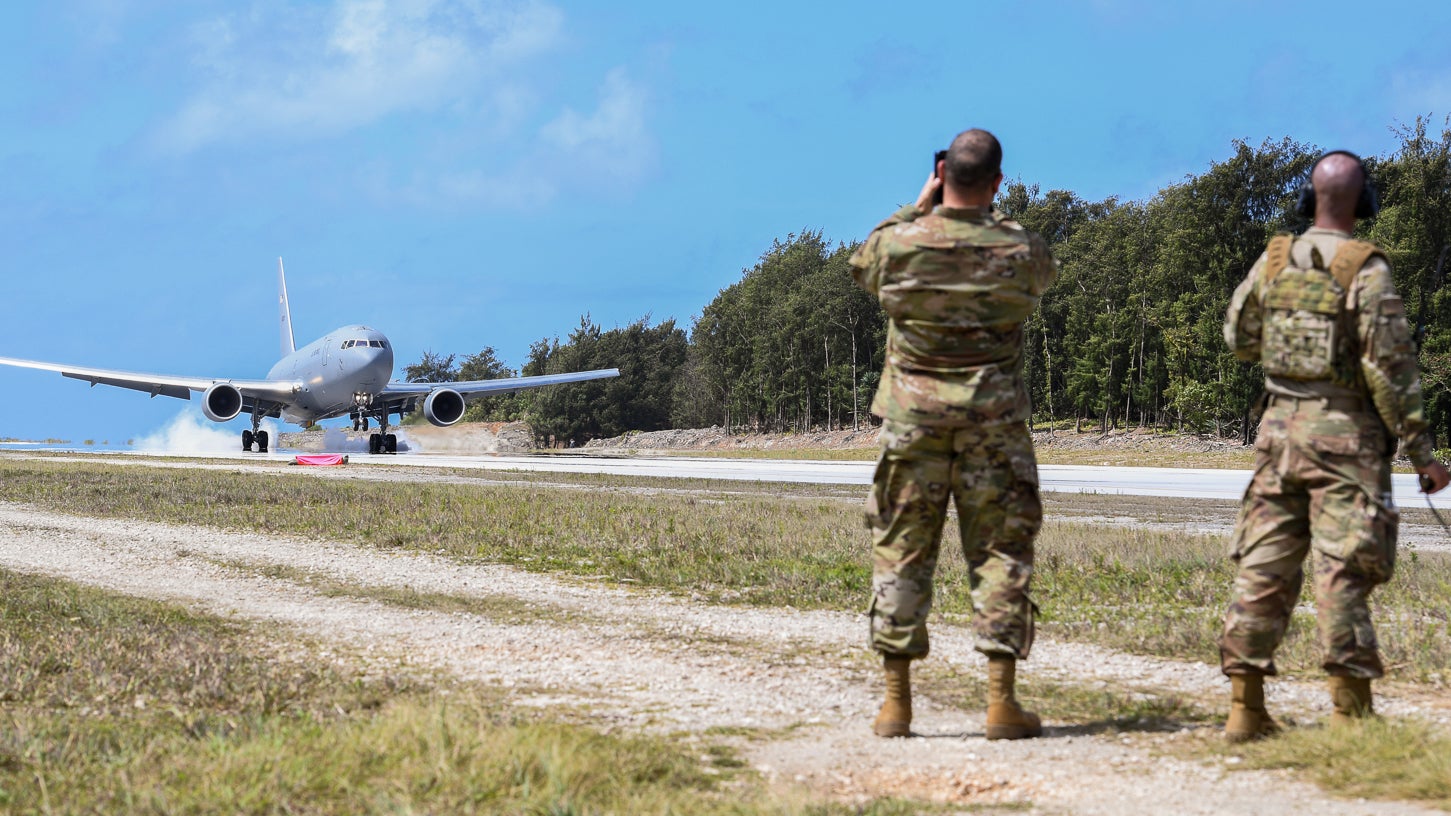For the first time ever, a U.S. Air Force KC-46A Pegasus aerial refueling tanker has taken part in a “dual defuel” operation at an austere location. This process involves flying the tanker to an airfield where the fuel is then rapidly offloaded via dual hoses onto two different refueling vehicles. The fuel can then be distributed to other aircraft, for example, to support a deployed fighter unit, while the tanker makes its exit, minimizing its time on the ground and increasing survivability. While the KC-46 continues to face a variety of problems fulfilling its primary aerial refueling mission, this latest demonstration shows that the Air Force is, nevertheless, continuing to find new roles for the aircraft.
The dual defuel operation involved a KC-46 from McConnell Air Force Base, Kansas, which arrived at the Northwest Field airstrip at Andersen Air Force Base, Guam, as part of the recent Cope North 22 exercise. The Air Force has now also released a video showing the KC-46’s involvement:

While McConnell’s 22nd Air Refueling Wing Agile Combat Employment (ACE) team has conducted a dual defuel mission before, last October, doing it from an austere location presents a different set of challenges and is far more reflective of how the Air Force might operate in an actual contingency. As well as the dedicated ACE team, the effort will have involved Air Force maintainers and Petroleum Oil and Lube (POL) personnel.


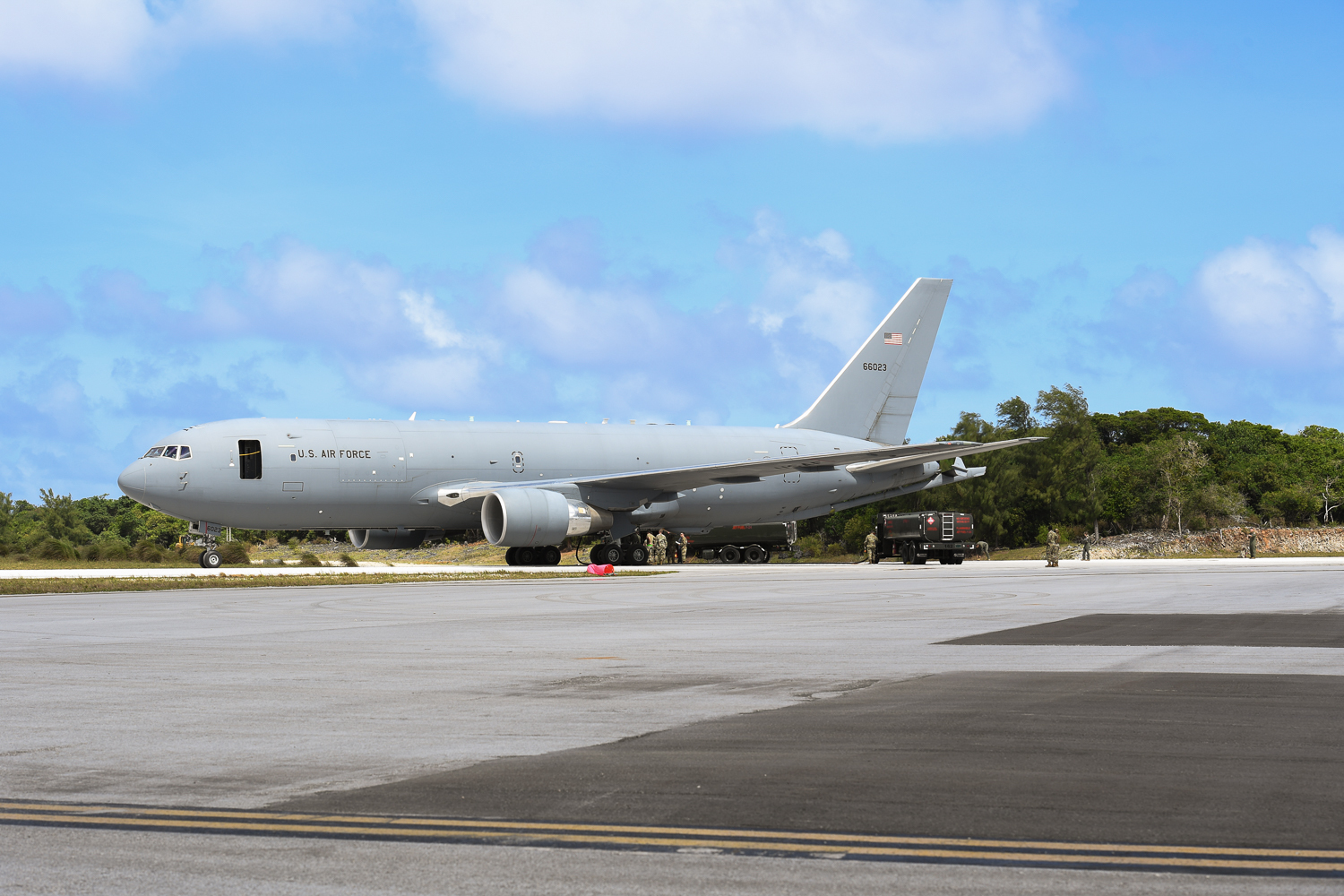
Photos released from Cope North 22 suggest that fuel unloaded from the KC-46 was used to top up F-16C fighter jets from the 35th Fighter Wing at Misawa Air Base, Japan. The Air Force previously confirmed that a Pegasus undertaking dual defuel is able to refuel a four-ship of F-16s “in the shortest time possible.”
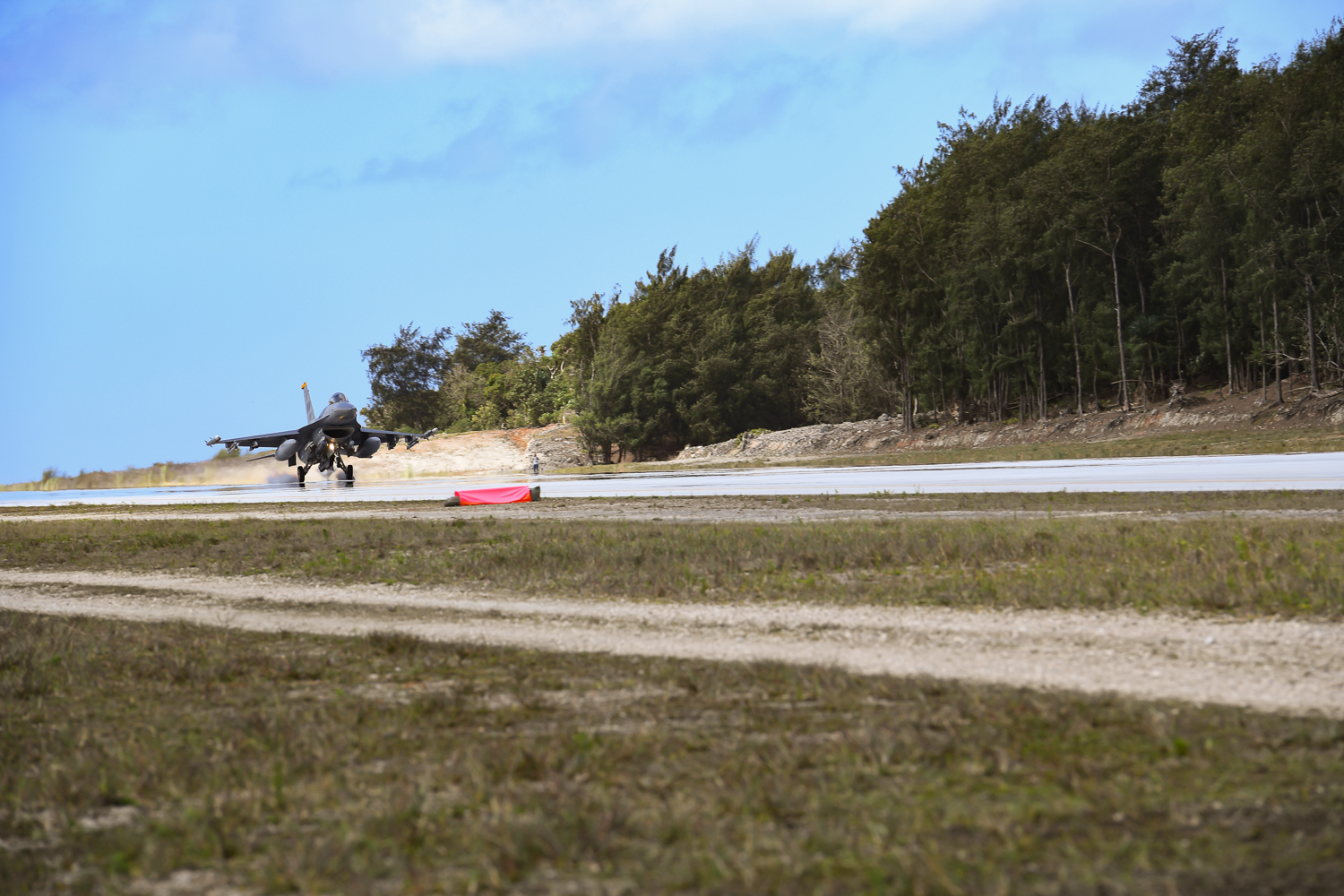
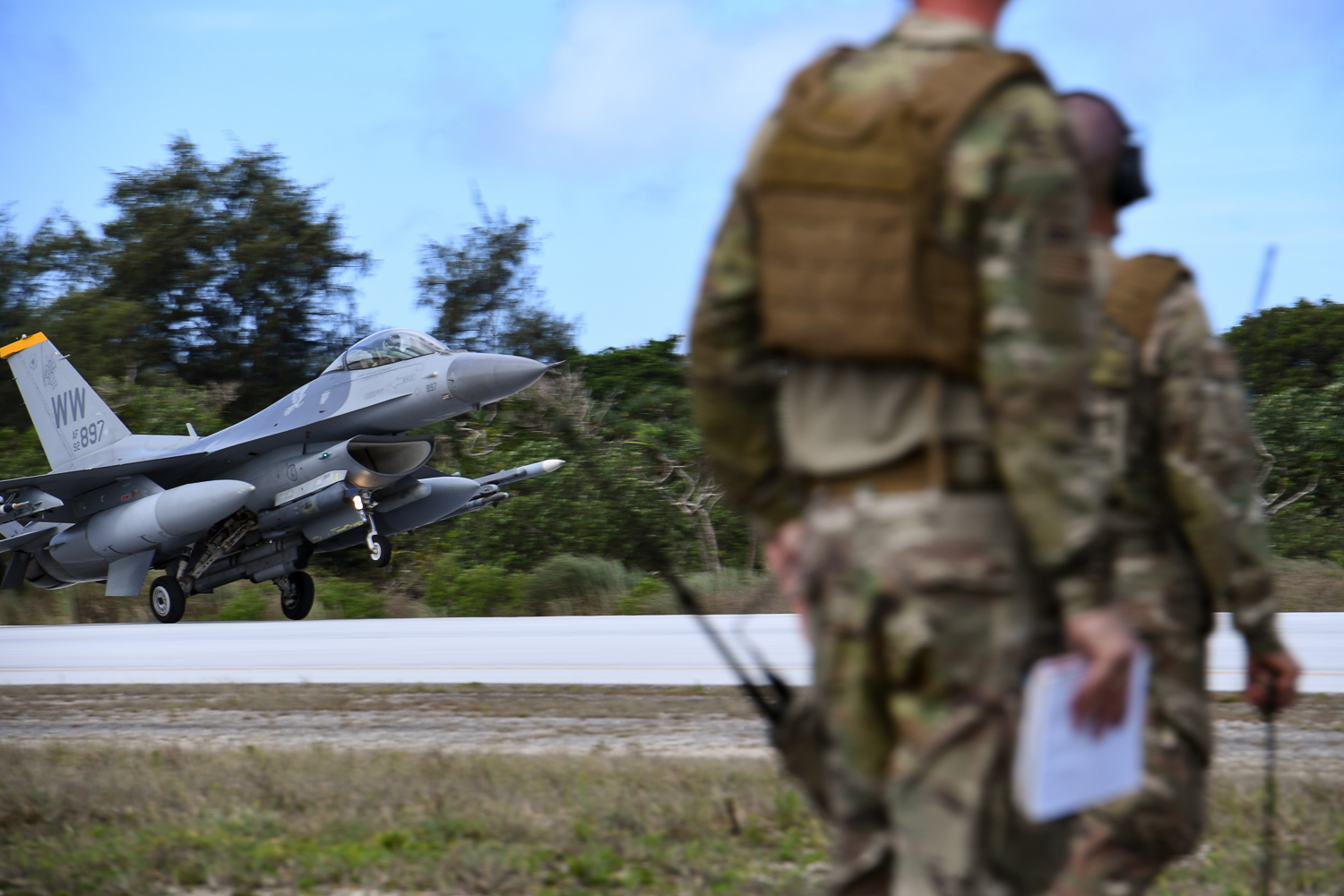
“The new process allows the Pegasus to fly into exercises to perform at an increased rate, allowing the aircraft to reduce its time on the ground and get its crew back into the air supporting operations,” the Air Force stated after last October’s dual defuel exercise at McConnell.
The Air Force has said that using the KC-46 for dual defuel translates to offloading fuel at twice the speed, presumably compared to the aging KC-135 Stratotanker, although that’s not immediately clear.
Regardless, the dual defuel operation as part of Cope North 22 is significant for the Air Force in general and for the troubled Pegasus in particular.
At first, the exercise proved that Northwest Field is able to handle tankers as large as the KC-46. The strategic importance of this airstrip is something we have addressed before. Essentially, its value lies in the fact that even a limited conflict with a peer-state competitor in the Asia Pacific theater would likely take a heavy toll on established runway facilities.
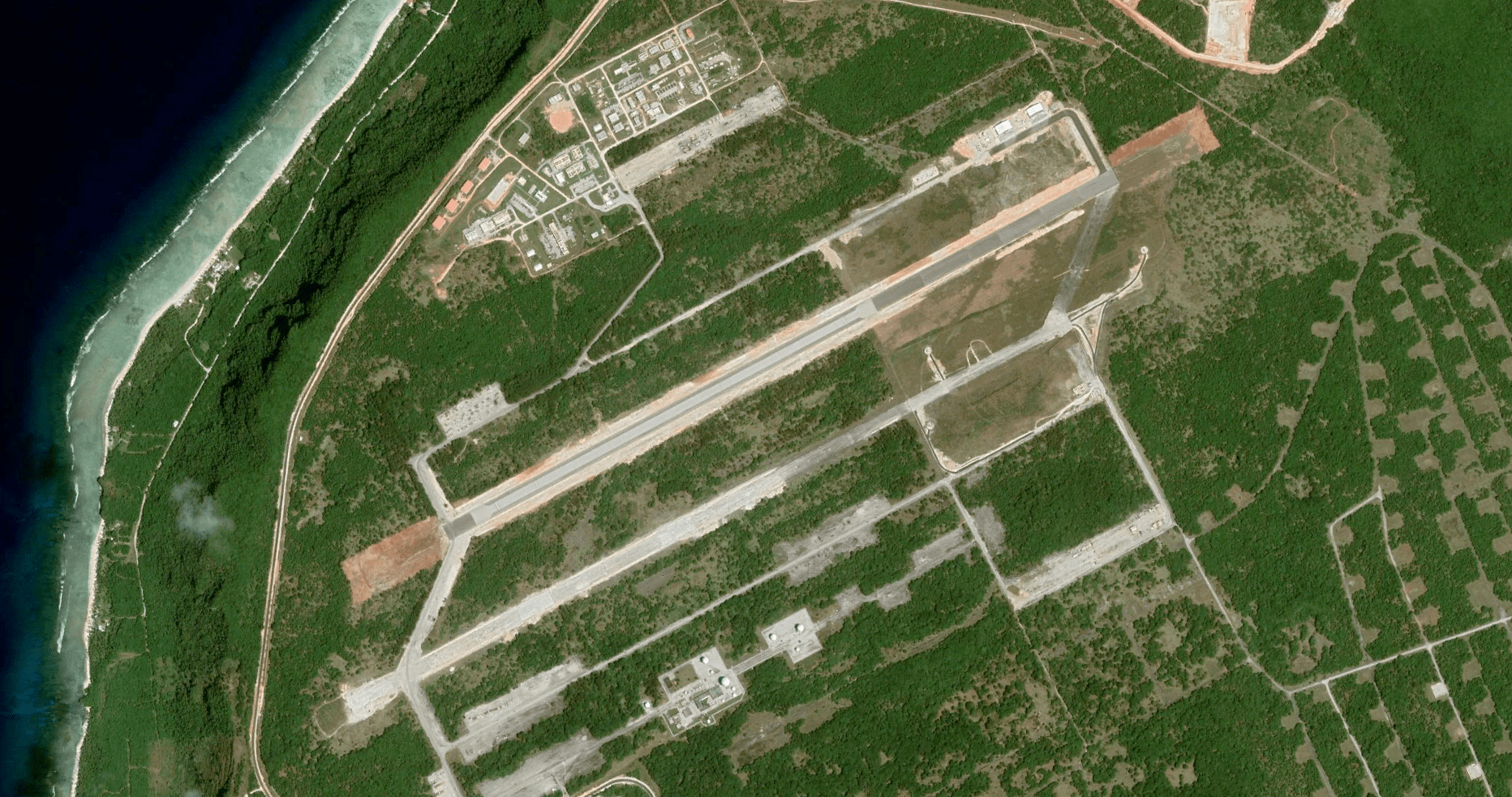
The sprawling Andersen Air Force Base on Guam is acknowledged to be vulnerable to barrages of Chinese ballistic missiles, and other potential threats and the Air Force has responded by making increasing use of forward basing options on Wake Island and nearby Tinian Island, as well as other locales.
Surrounded by jungle, Andersen’s Northwest Field airstrip is notably basic, despite improvements, but it’s been proven that it can host fighters, including fifth-generation F-35 stealth jets. The airstrip has also been used for previous operations by helicopters and by C-130 transports, but now that it’s been lengthened it can also support operations by the KC-46, which places greater demands due to its size, weight, and takeoff and landing performance.
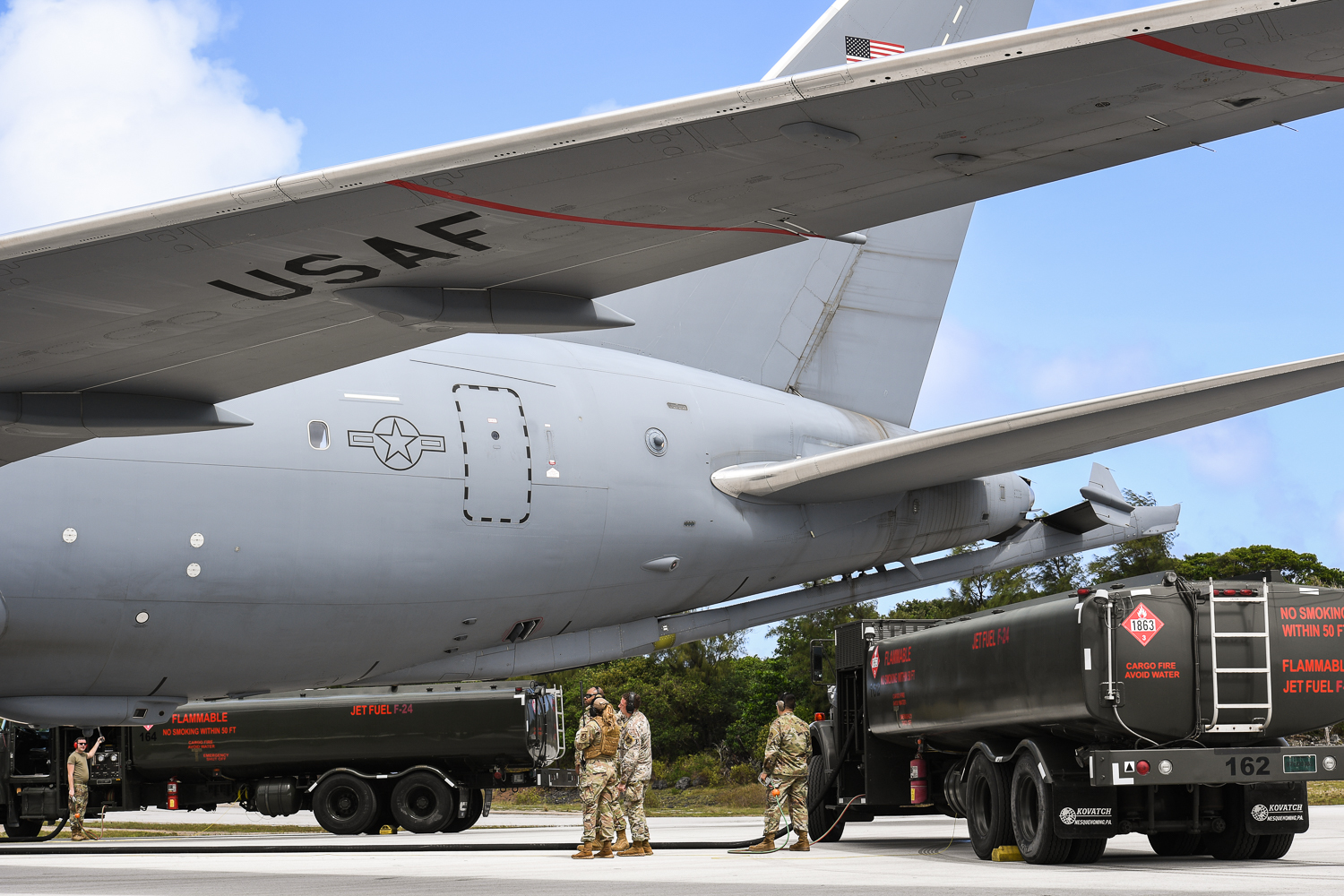
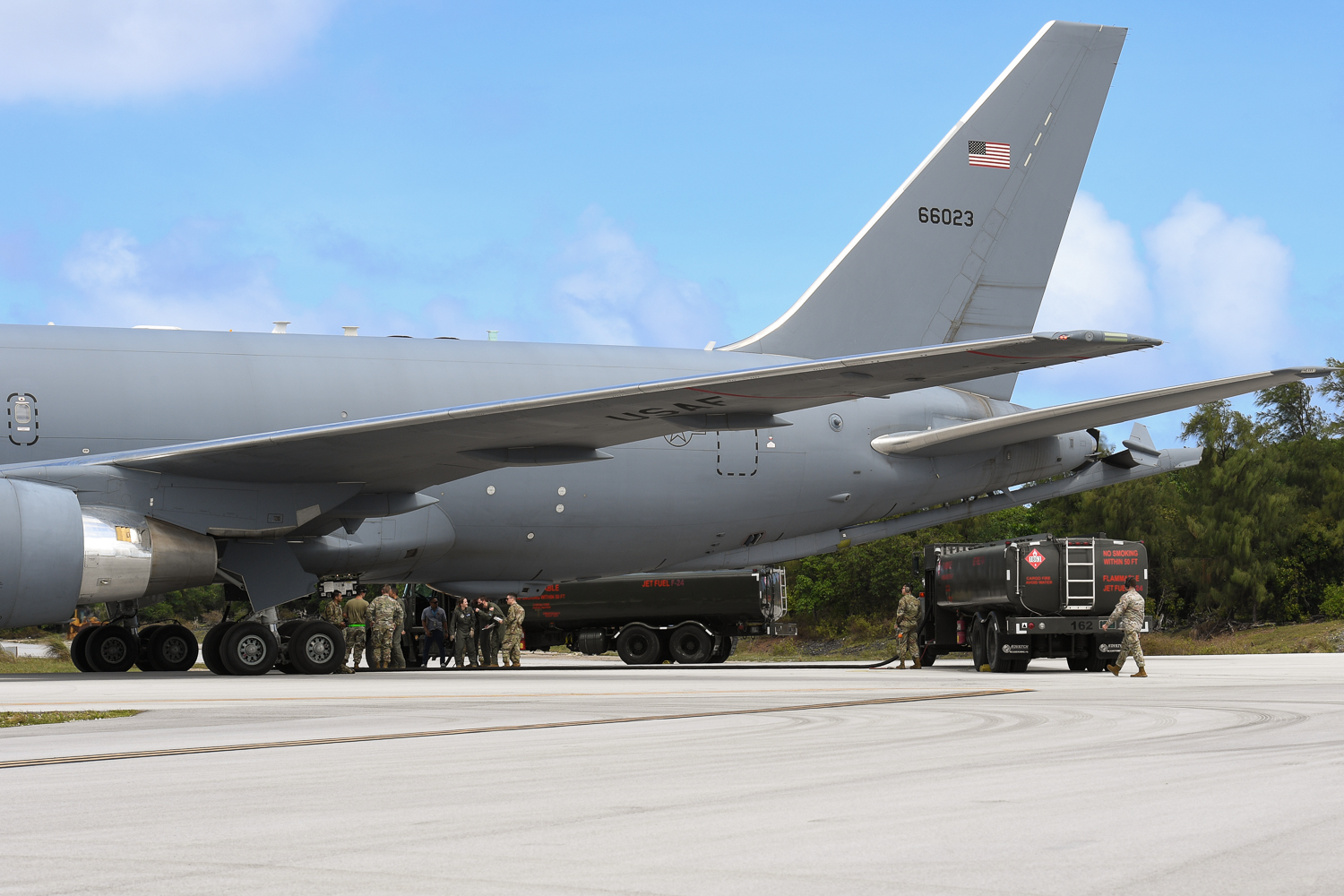
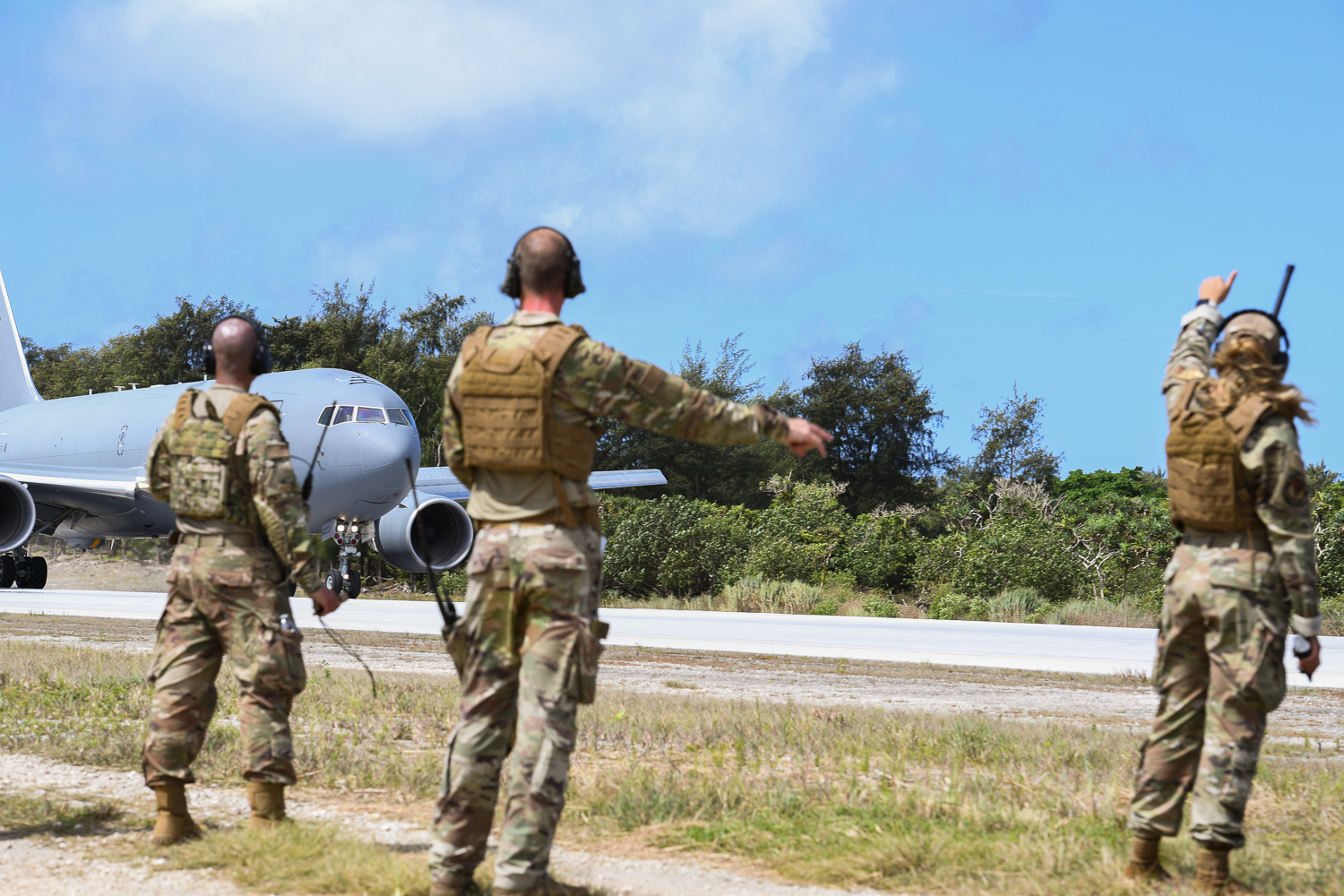
All this means that the KC-46 is now able to contribute to ACE tactics on the ground, essentially as a mobile gas station, but also by bringing in personnel and cargo at the same time. In this way, the tanker can help sustain high-tempo operations, providing fuel for fighters despite the limited nature of support on the ground. At the same time, the Pegasus can significantly enhance the ability of the Air Force to move assets around in a less predictable way, supporting small groups of fighters, or other aircraft, operating from austere and other non-traditional locations. The end result should be enhanced survivability for the entire ACE package.
Outfitted as it is with extensive defensive countermeasures, including a Directional Infrared Countermeasure system, or DIRCM, and missile approach warning sensors, plus a datalink, the KC-46 also has enhanced survivability to ensure it can get safely in and out of these kinds of locations.
As for security for Northwest Field itself, this has been enhanced in recent years, including a local THAAD missile battery that protects that can defend against low-volume ballistic missile barrages, plus specialized jungle teams trained to protect the airstrip from infiltration. A relatively new addition to Guam is an Iron Dome air defense system, which has the ability to shoot down small drones and low-flying cruise missiles.
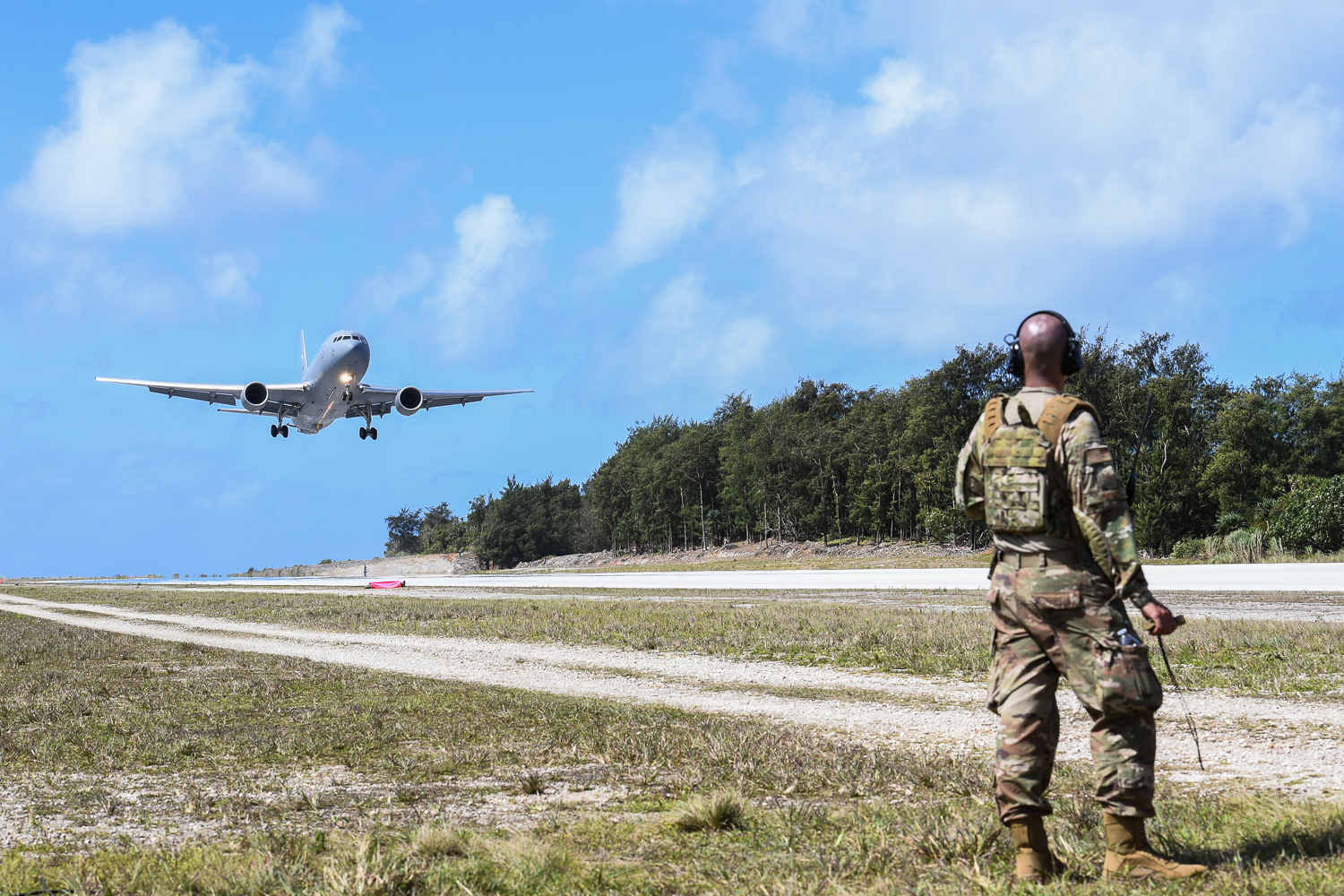

The second major takeaway is that the Air Force is continuing to squeeze relevant capability out of the KC-46 in the near term, despite various technical issues that are hampering it in its core aerial refueling mission.
Earlier this year, the U.S. Government Accountability Office confirmed that the Air Force is not likely to get its hands on KC-46s with all their problems ironed out until 2026 at the earliest. The report highlighted the ongoing troubles with the Remote Vision System and boom, stating that these present new risks and could lead to yet more delays.
Last year, the Air Force finally approved the use of the Pegasus in actual operational scenarios, rather than just in support of training and other non-combat missions, but at that point, it was only able to refuel C-17 cargo planes, B-52 bombers, and other KC-46As in these types of missions.
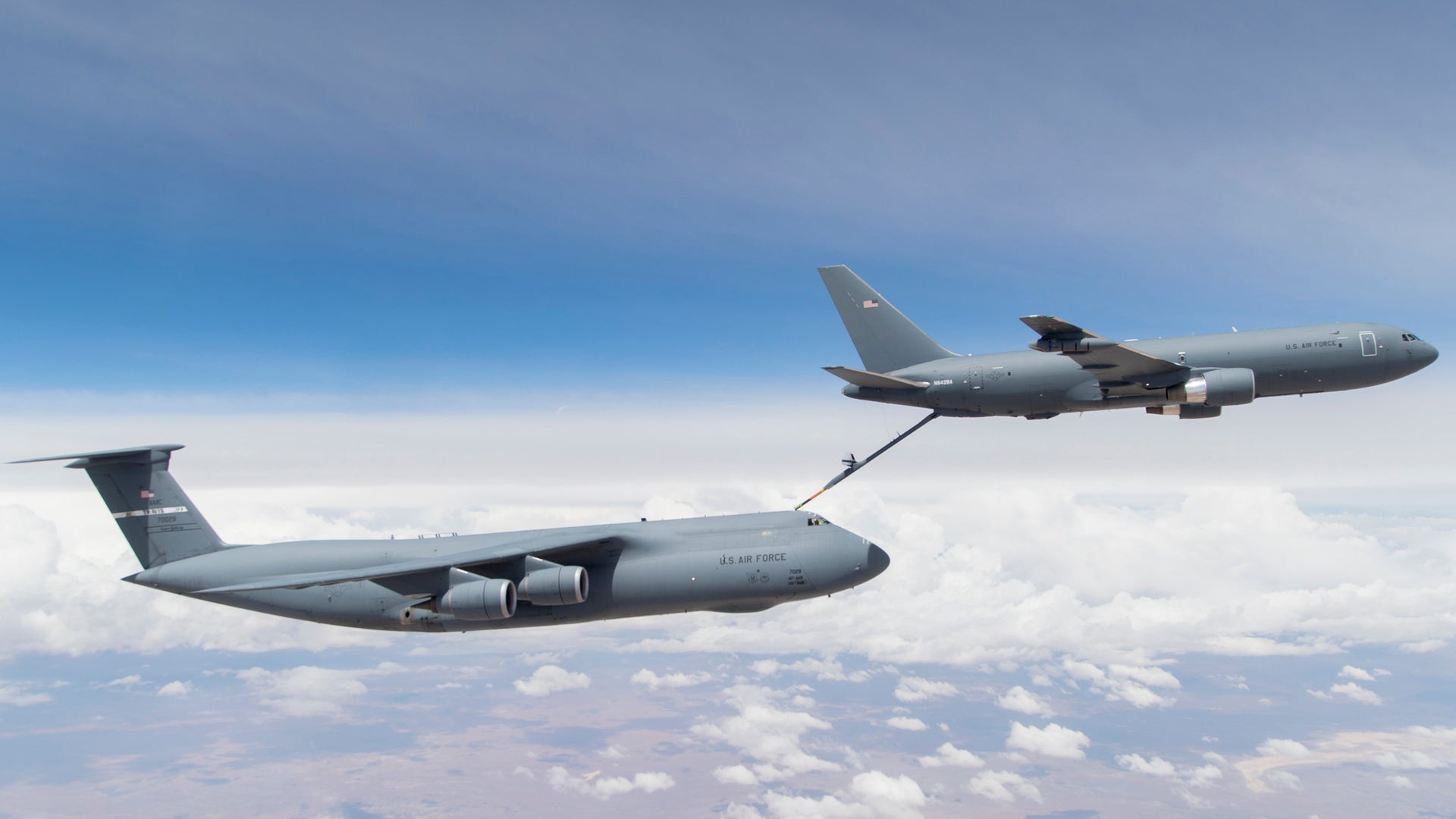
Since then, the Air Force marked the milestone delivery of the 50th Pegasus earlier this year, but with critical deficiencies continuing to limit how and when the aircraft can be employed in its primary role or air-to-air refueling, the service is keen to put the KC-46 to use in other ways.
Previously, the Air Force has trialed the KC-46 in an aeromedical role and it has also been tested as a command and control platform hosting the Advanced Battle Management System, or ABMS, which you can read more about here and here.
Clearly, the Air Force is well aware that its existing KC-46s are still years away from reaching their full potential. The service is already looking to buy additional tankers, which will not necessarily be more KC-46As, to serve as interim equipment before fielding an advanced aerial refueling aircraft of some kind. But with the KC-46 fleet still poised to increase to at least 175, it desperately needs to ensure it gets at least something back from its investment, in the near term.
With the ACE initiative becoming ever more important in the context of both the Asia Pacific and European theaters, using the KC-46 for dual defuel operations could provide the Air Force with a valuable niche capability.
Contact the author: thomas@thedrive.com
